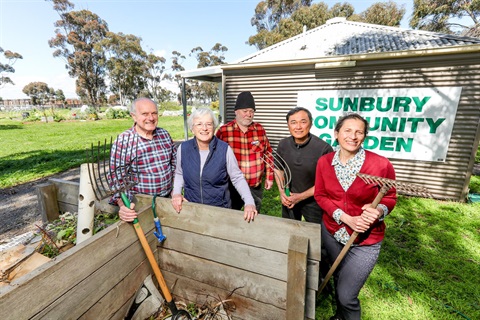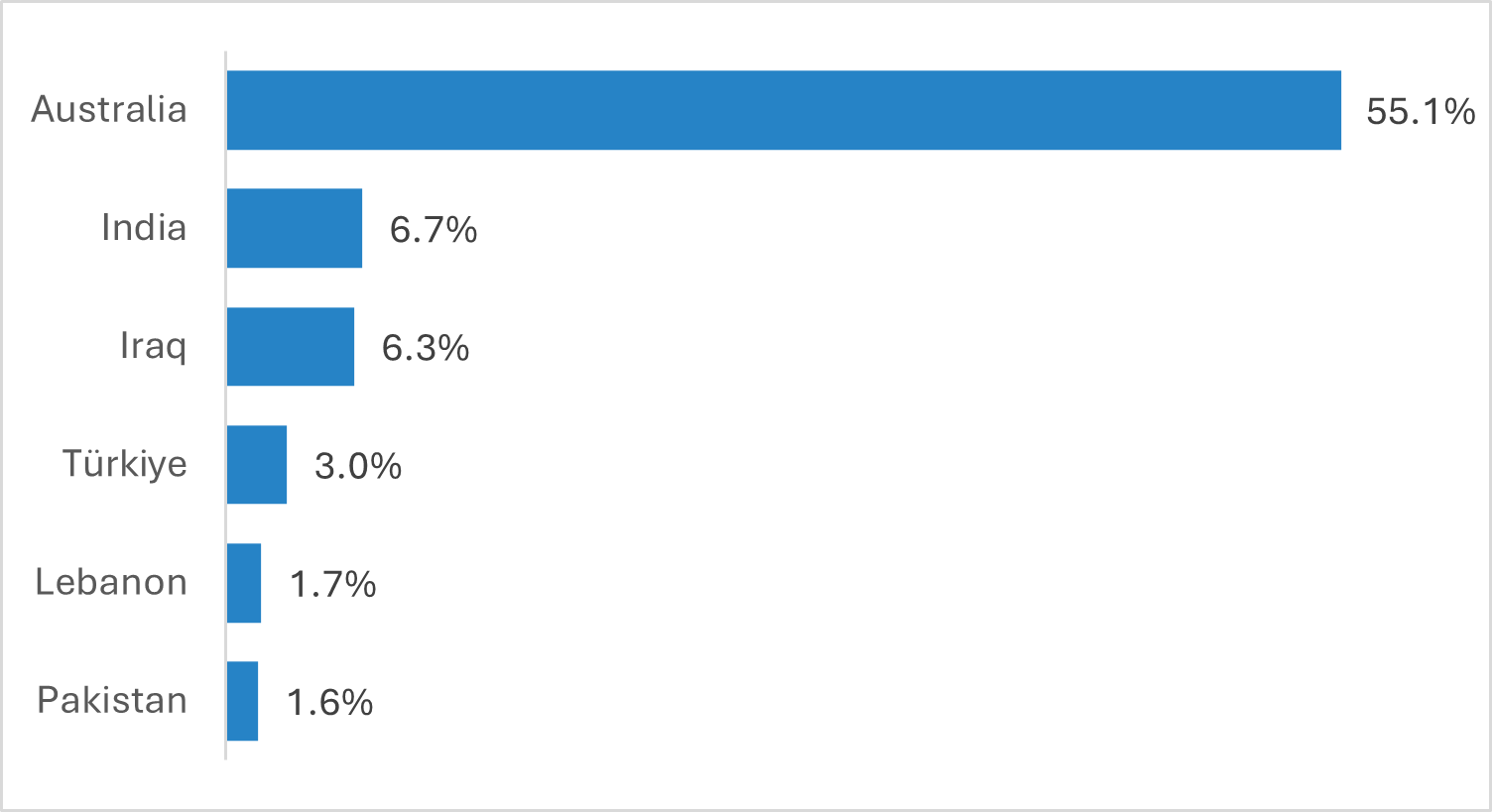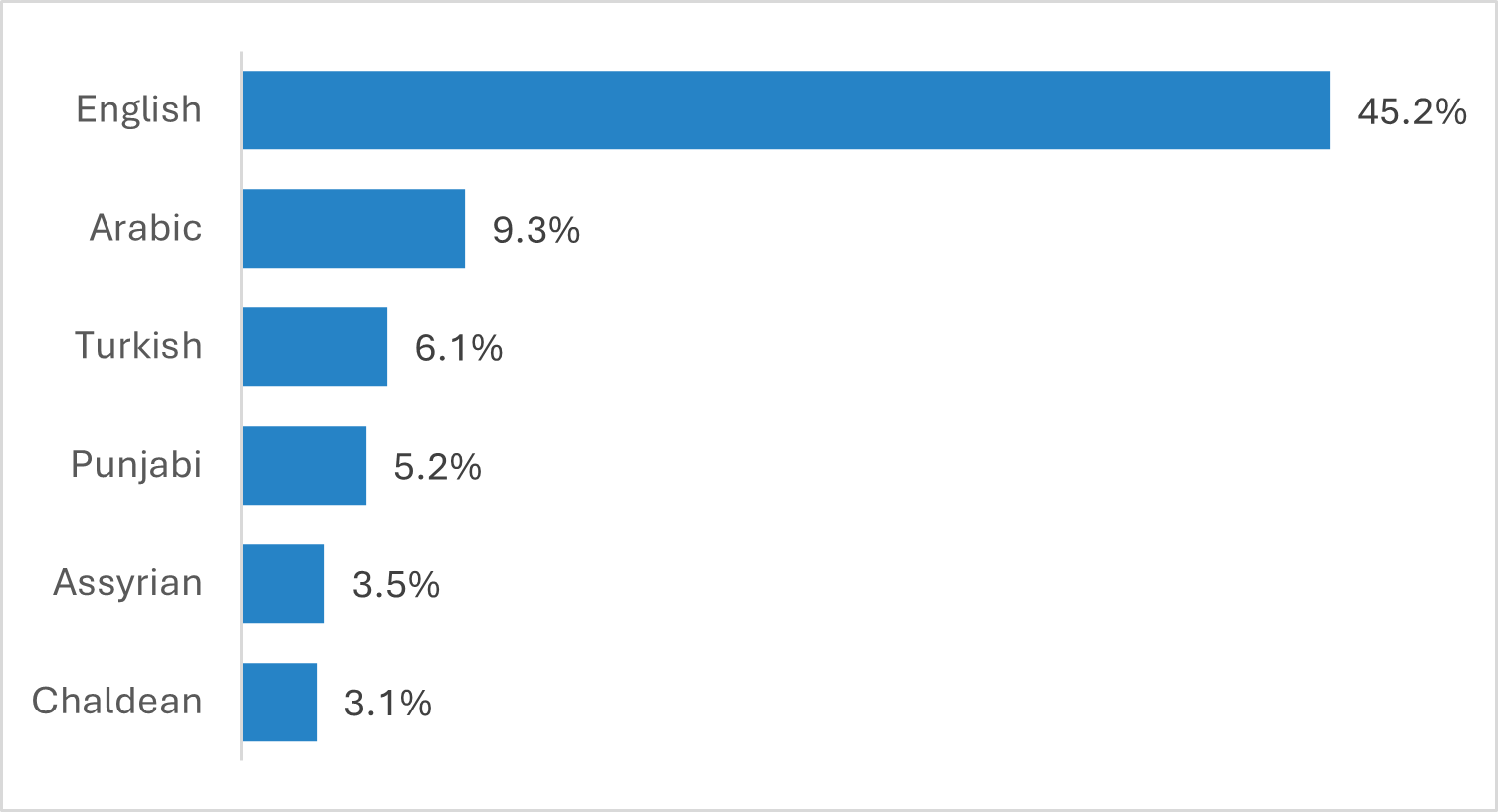Community Profile

Aboriginal and Torres Strait Islanders
According to the 2021 Census, approximately 1,870 Aboriginal and Torres Strait Islander people live in Hume, making it home to the fifth-largest Indigenous population in Greater Melbourne. Craigieburn and Sunbury have the largest Indigenous communities within Hume, followed by Meadow Heights, Mickleham, Broadmeadows, and Roxburgh Park.
Cultural, Linguistic and Religious Diversity
Hume City's diverse community is reflected in its population, with residents hailing from over 170 different countries and speaking more than 155 languages. Approximately 40% of Hume's residents were born overseas, compared to 36% for Greater Melbourne. Hume has the largest population of people born in Türkiye in Australia, and the second-largest population of those born in Iraq. Between 2016 and 2021, there was significant growth in residents from Nepal, Syria, India, and Pakistan. Areas in Hume City where close to half of residents were born overseas include Roxburgh Park, Broadmeadows, Craigieburn, Kalkallo, and Campbellfield.
Top countries of birth

Almost half (49%) of Hume City's population speaks a language other than English at home, notably higher than Greater Melbourne's 34%. In some areas, such as Roxburgh Park, Campbellfield, Meadow Heights, Dallas, and Broadmeadows, more than 60% of people speak a language other than English. The most common non-English languages are Arabic, Turkish, Punjabi, Assyrian, and Chaldean.
Top languages spoken at home

Religion
Religion plays a significant role in the lives of Hume's residents, with around 74% identifying with a religion, compared to 56% in Greater Melbourne. The most common religions in Hume are Catholicism, Islam, Hinduism, Sikhism, and Anglicanism. Hume has the largest Islamic population in Victoria and the third largest in Australia.
New Migrants
As of 2021, almost one quarter of Hume’s total population (22.2%) were permanent migrants who arrived in Australia between 2000 and 2021. Hume City has the third largest number of migrants across all Victorian local government areas. Of Hume’s permanent migrants more than one in three (34.0%) entered Australia under the Humanitarian Program and two in five under the Skilled Program (40.6%). Hume City has the largest number of permanent migrants who arrived under the Humanitarian Program, across all Victorian local government areas, and accounts for one-fifth of Victoria’s total humanitarian intake. In fact, Hume is home to the second largest population of humanitarian migrants across all of Australia.
LGBTIQA+ Population
Census data on the LGBTIQA+ population is not currently available, however is expected to be collected at the next national census in 2026. According to the 2023 Victorian Population Health Survey, 7.7% of Hume City respondents were LGBTIQA+, lower than compared to Victoria at 11.0%.
Children and Young People
There are more children and young people aged 0-24 across Hume City than compared to Greater Melbourne, making up more than one third (35.8%) of Hume’s population.
Results from the 2021 Australian Early Development Census (AEDC) show that across all domains children living in Hume City are more likely to be developmentally vulnerable than their peers compared to both greater Melbourne and Victoria. Of particular note, one in thirteen children (15.6%) in Hume City have at least sometimes experienced coming unprepared for school by being dressed inappropriately, coming to school late, hungry or tired.
Older Adults
Compared to Greater Melbourne, there is a lower proportion of persons in all age groups 45 years and over in Hume. One in ten people (10.7%) living in Hume are aged between 65 years and older. In comparison to other Melbourne Metropolitan Council areas, Hume City has the fourth highest proportion of residents aged 65 years or older who identified as requiring a need for assistance with core activities.